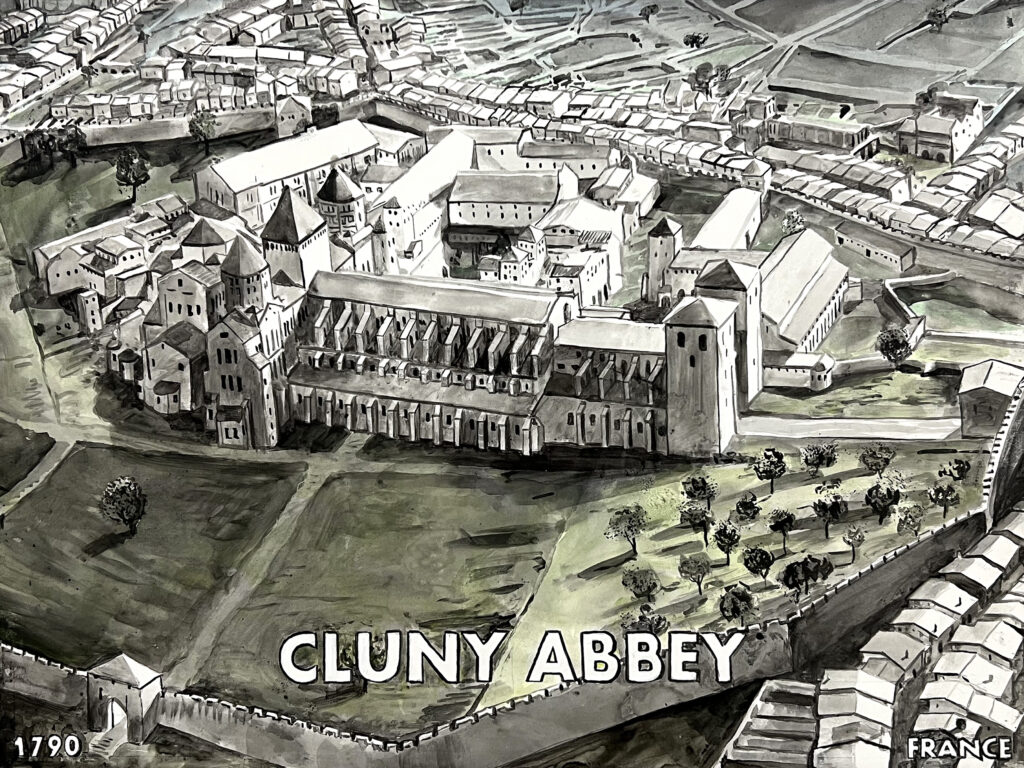Cluny, Saône-et-Loire, France
Sacked 1790

The Disappointed Tourist: Cluny Abbey, Ellen Harvey, 2021. Oil and acrylic on Gessoboard, 18 x 24″ (46 x 61 cm). Photograph: Etienne Frossard.
The Cluny monastery was one of my favorite buildings when I was studying medieval architecture during my art history classes at the university. I was devastated when I learned that the original Roman and Gothic building that had evolved in three building stages to something like the ideal monastery had been destroyed during the French Wars of Religion and the remains were used as a quarry in the aftermath of the French Revolution. Tina T.
Cluny Abbey (French: Abbaye de Cluny) was a Benedictine monastery dedicated to St. Peter, founded in 910 by Duke William I of Acquitaine. The third and final church built at the Abbey was the largest building in Europe until the construction of St. Paul’s in the 16th Century. The cost of the last church created financial difficulties that continued until its destruction during the French Revolution starting in 1790. The extensive archives and library were burned in 1793 and its estate sold in 1798. Stone from the immense buildings were used to rebuild the nearby town. Today, little remains. Since 1901, the site has been the location of the École Nationale Supérieure d’Arts et Métiers, an elite school of engineering. The painting is based on a model of the abbey that I found on Wikipedia.
No. 192